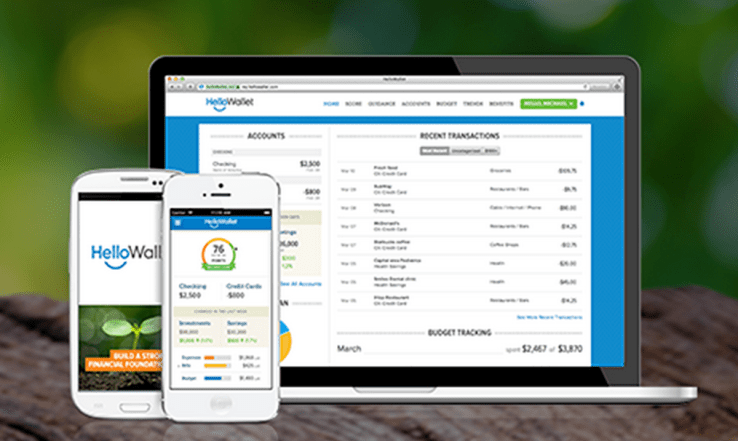BRUSSELS—It is easy to get lost in European bureaucratese, with its byzantine designations and overlapping commissioners, vice presidents, and directorates-general.
BRUSSELS—It is easy to get lost in European bureaucratese, with its byzantine designations and overlapping commissioners, vice presidents, and directorates-general. But when it comes to digital policy, the important thing to know is just this: Andrus Ansip is the most powerful person in Europe today. As the commissioner in charge of the “digital single market,” his job is, literally, “to make Europe a world leader in information and communication technology.”
For many outside Europe, this aspiration to become a world leader, combined with ongoing regulatory actionsagainst American tech companies, suggests an aggressive, protectionist Europe willing to engage in battle with US firms to favor its own. In February, America’s president came out and said as much, telling Re/Code that “sometimes the European response here is more commercially driven than anything else.”
That perception came up often when Quartz sat down with Ansip in July for an hour-long interview at his office on the ninth floor of the European Commission headquarters in Brussels. At one point in the chat, Ansip pulled out a sheet from a briefing folder in front of him. “So about those competition cases, I have some figures,” he said, citing numbers from a May speechhe delivered at the Brookings Institution in Washington. “Our competition cases here in the EU,” he added, “they are not so much connected with the American companies.”

It’s not about America…
Yet scan the headlines over the past few months, and with the exception of Russia’s Gazprom, each of the big-ticket charges and investigations announced by European regulators have involved American firms: Google, Apple, Amazon, various e-commerce and travel businesses, Hollywood studios, and, most recently, Walt Disney Co.
“I don’t think we have to accept this kind of business model.” But many of these cases, while seemingly targeting American companies, adhere to an internal logic. Take the recent matters involving Disney and the Hollywood studios. They stand accused of something that has long been illegal in the EU: discriminating between Europeans, either on the basis of price or access to services. In the case of Disney, for example, the company drew complaints that it was charging residents of different countries different ticket pricesfor Disneyland Paris, and selectively blocking online access to deals that were made available only to consumers in France or Belgium.
“If someone is selling some magazines or hamburgers somewhere, it will be [a] huge scandal if they say, ‘No, those goods are for our own people, not for you, and we are not accepting credit cards issued in your country,'” Ansip says. “It’s illegal in the physical meaning in the European Union. But in [the] digital meaning, they say it’s [the] basis of our business model. I don’t think we have to accept this kind of business model.”
The cases fighting against geo-blocking is part of the EU’s foundational principle of creating an “ ever closer union.” A recent agreement over to abolish roaming charges across the EU by 2017 is another example, and one in which Ansip and his staff take great pride. It is all part of the grand project to turn Europe into a single economic entity.
…It’s about Europe
Ansip argues that the the reforms he is putting in place apply to all companies, be they European, American, Japanese, or of any other provenance.
“It’s not fortress Europe, it’s about fair competition, it’s about opportunity. America’s companies, some of them, are much more successful here in the EU than in the USA. That is clear evidence that there is a friendly environment for American companies here in the EU. These companies are very welcome here in the EU but they have to follow EU regulations. Everyone has to,” he says.
“It’s not fortress Europe, it’s about fair competition, it’s about opportunity.” But any company operating in the European Union today also needs to understand the regulations and tax systems in 28 separate member states. This is a baffling and exhausting process—and one that Ansip hopes to consign to the dustbin.
In May, the European Commission announced a 16-point strategyfor turning Europe into a single digital market(pdf). This means Ansip has the mammoth task of tearing down virtual barriers to online trade and commerce—doing in the digital realm, within the commission’s five-year mandate, what the EU gradually achieved in the physical world over half a century.
Ansip’s 16 agenda items are equal parts wish list and to-do list. They also are only the first step in a long and arduous task. By the time roaming charges disappear in 2017, it will have been a decade since the Commission took up the cause. Nonetheless, Ansip is confident of the speed with which he and his colleagues will be able to change things.
“We put together this digital single market strategy within our first six months in the office,” he says. “Our aim is to make all those legislative and non-legislative proposals according to the digital single market [strategy] within this year and next year.”
It is an ambitious timetable, but also a typically European response to a global problem: When confronted with a need to compete with Silicon Valley, the EU’s answer is more rulemaking.
Red tape and paper trails
Ansip is often accused of being roboticin his manner, and it is true that he does a great job of adhering to the party line. Part of that is training: he spent a lifetime as a politician in Estonia, with a nine-year tenure as prime minister, the longest of any European premier. Part of that is perhaps an inclination toward regimen, even outside of work. (Ansip is a keen cyclist, having done 3,115 km by the middle of July, including 400 km after he broke an armwhen he trapped a wheel in a grate in June.)
But he’s not so robotic that he always stays on script, or even uses one, on topics that raise his ire. Speaking on the record at a press briefing, he once said, “Once again I would like to say, I hate geo-blocking.” Lately, he has been making noise about the cost of cross-border parcel deliver. A question about digitization more generally elicits an extended rant, involving an example of a long-felt frustration.
“Yes! You have to bring paper,” says Ansip. “Why? Why do we have to do that?” Both Estonia and Finland have highly developed IT sectors, Ansip explains. The two countries are a short ferry ride away from each other. Yet, each year, 20,000 Estonians working in Finland must return to their home country to gather paper documents for Finnish authorities.
“It means they have to take ferry or airplane, then visit those offices, stay in queues. Then civil servants will print out this digital information on paper, put signature on paper, and then people, very carefully, will bring those documents back to the ferry, back to the airplane, and they bring those documents back to Finland,” Ansip says. “And then, as we know, Finnish civil servant[s], they are really good people; without making any mistakes, they will type this information from paper documents into their digital registers.”
Even the commission itself is wedded to paper-based systems, chimes in Ansip’s spokeswoman, no stranger to the equally stifling bureaucracy at the pan-European level.
“Yes! You have to bring paper,” Ansip confirms. “I asked this a year ago in the European Parliament. We can buy plane tickets online, you can use those tickets electronically, [but] if you have to submit those tickets to the administration of the European Parliament, you have to print them out. Why? Why do we have to do that?”
A will, yes. But a way?
These sorts of low-level annoyances are hardly the stuff of attention-grabbing headlines like antitrust charges against Google, but addressing them is crucial to making Europe more competitive and efficient. Ansip has had some degree of success changing slow-moving bureaucracies before, although that was in Estonia, a country of 1.3 million people to Europe’s 500 million.
Amongst the many digital initiatives he oversaw in his tenure as prime minister, perhaps the most impactful were digital identity and the once-only principle. The former allowed citizens to identify themselves online and has now been extendedto non-Estonian citizens. The latter is more revolutionary yet, and an idea Ansip hopes to implement on a European scale: It is the idea that government can only ask for a piece of information once. If a different department needs it again, it must coordinate internally rather than trouble the citizen.
Between the inconveniences it would eliminate and the savings it would generate—the Commission reckons such a system would save about €5 billion a year—it’s hard to imagine that Ansip wouldn’t have the will of the citizenry on his side with this. The question is whether even all that would be enough to force change.











 The message Facebook would like Indian internet users to display, as seen on a Dubai-based Facebook executive’s page.
The message Facebook would like Indian internet users to display, as seen on a Dubai-based Facebook executive’s page. 






